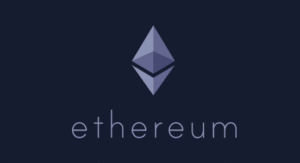$ETH
#Ethereum #ETH #Blockchain #Cryptocurrency #ModularArchitecture #CryptoMarket #DigitalCurrency #NetworkResilience #EcosystemGrowth #FinancialTechnology #CryptoResearch #LongTermInvesting
Ethereum’s transition towards a modular architecture, a recent development within the cryptocurrency universe, is under the spotlight for its intriguing impact on the digital asset’s short-term price performance and its long-term market positioning. Unlike traditional blockchains, Ethereum’s new approach divides its functions across several layers, aiming to enhance scalability, security, and decentralization. This innovation, while promising to solidify Ethereum’s standing in the crypto ecosystem, has stirred debates among investors and technologists regarding its immediate repercussions on the value of Ethereum (ETH).
The short-term effects on ETH’s price are subject to scrutiny, as the modular strategy involves significant changes in how transactions are processed and secured. According to recent findings, this shift may not bode well for ETH’s price in the near term. The rationale lies in the anticipated adjustment period market participants need to acclimate to the novel infrastructure, possibly leading to temporary hesitancy in adoption and investment. This adjustment phase could induce volatility in ETH’s price, as the market gauges the impact of these structural changes on Ethereum’s transaction throughput, fees, and overall network efficiency.
However, when looking beyond the immediate horizon, the modular architecture is likely to pave the way for unprecedented resilience and ecosystem growth for Ethereum. By decoupling various blockchain functions, Ethereum aims to tackle longstanding challenges such as network congestion and high gas fees, which have hindered its scalability and user experience. This architectural evolution is expected to attract a wider range of developers and users, further diversifying and strengthening Ethereum’s decentralized applications (DApps) landscape. Moreover, enhanced scalability and efficiency can open new avenues for Ethereum in decentralized finance (DeFi), non-fungible tokens (NFTs), and beyond, potentially increasing the demand for ETH as a fundamental asset within its ecosystem.
In conclusion, Ethereum’s foray into modular architecture is a calculated move that underscores the network’s vision for a scalable, secure, and decentralized future. While the short-term pathway might be fraught with price volatility and market skepticism, the long-term outlook appears bright. The shift is likely to fortify Ethereum’s position as a leading platform for innovation in the blockchain space, fostering growth and adoption across a multitude of applications. Investors and stakeholders within the Ethereum ecosystem should brace for near-term uncertainties but remain optimistic about the potential for robust long-term gains, stemming from increased network capabilities and a broader adoption curve.






Comments are closed.